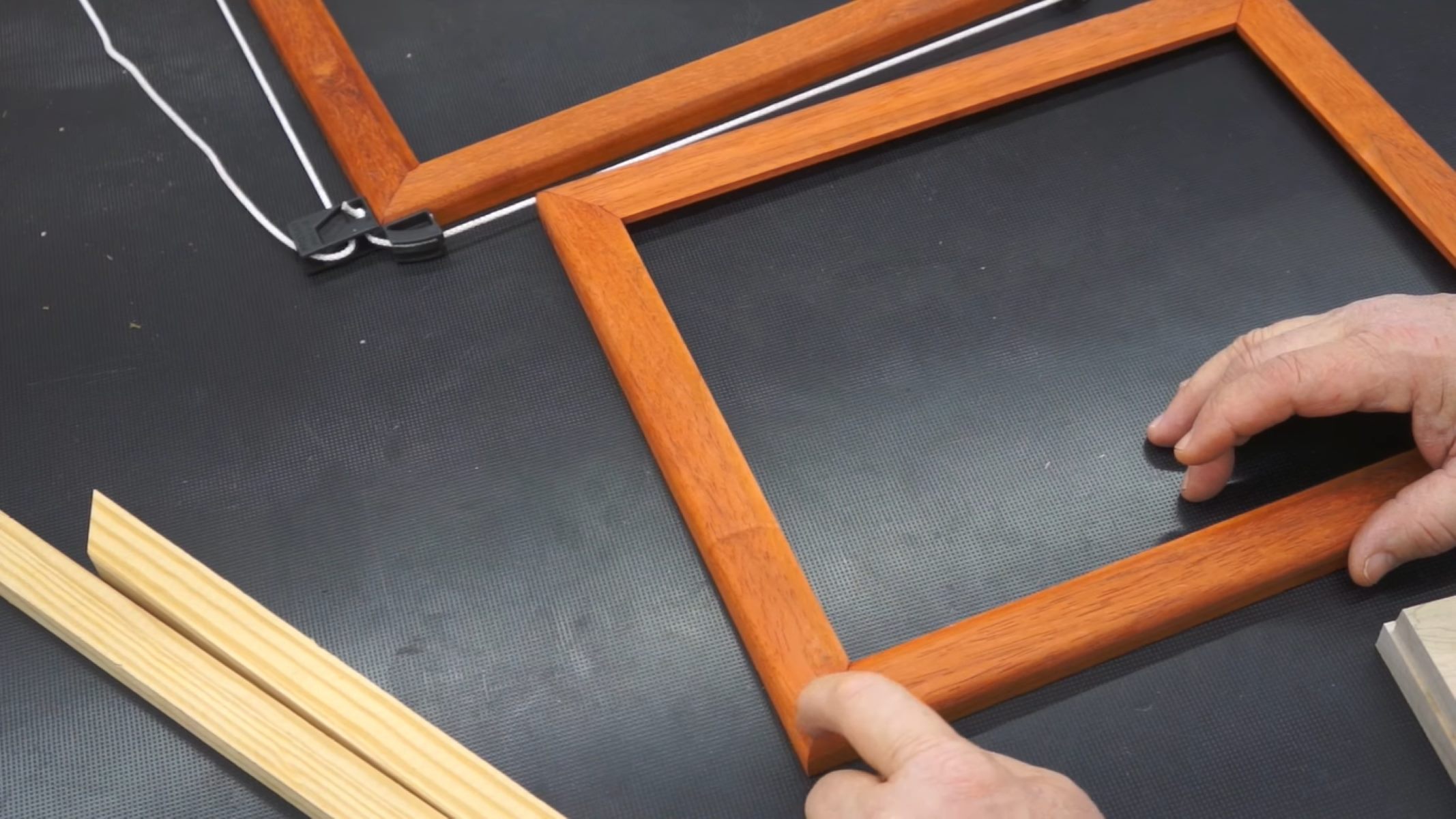

Articles
How To Store Picture Frames
Modified: January 18, 2024
Learn how to properly store and protect your picture frames with these helpful articles. Keep your memories safe for years to come.
(Many of the links in this article redirect to a specific reviewed product. Your purchase of these products through affiliate links helps to generate commission for Storables.com, at no extra cost. Learn more)
Introduction
Picture frames are not only decorative pieces, but they also hold sentimental value as they preserve our cherished memories. Whether it’s a family photo, a piece of artwork, or a vintage print, proper storage is crucial to ensure that picture frames remain in pristine condition.
In this article, we will discuss the best practices for storing picture frames. From choosing the right storage location to wrapping and protecting frames, we’ll cover everything you need to know to keep your frames safe and well-preserved.
So, if you’re looking to declutter your space, move homes, or simply need a safe place to store your picture frames, read on to discover the best storage techniques.
Key Takeaways:
- Preserve your picture frames by understanding their type and choosing the right storage location. Proper preparation, wrapping, and storing in sturdy boxes will keep them safe and ready for display.
- When hanging and displaying your picture frames, consider placement, proper lighting, and frame protection. Create an aesthetically pleasing arrangement that showcases your cherished memories or artwork.
Read more: How To Store Framed Pictures In Garage
Types of Picture Frames
Before delving into the storage process, it’s important to understand the different types of picture frames you may encounter. This knowledge will help you determine the best storage method for your frames.
1. Wood Frames: These are classic and durable frames, often made from hardwood or softwood. Wood frames should be stored in a dry environment to prevent warping or moisture damage.
2. Metal Frames: Sleek and modern, metal frames are commonly made from aluminum or steel. Store metal frames in a cool and dry place to prevent oxidation or corrosion.
3. Glass Frames: These frames feature a glass front, providing a clear view of the artwork or photo. When storing glass frames, extra care must be taken to protect the glass from scratches or breakage.
4. Ornate Frames: Ornate frames are highly decorative with intricate designs and carvings. These frames may require additional protection during storage to prevent damage to their delicate features.
Now that you are familiar with the different types of picture frames, let’s move on to the next step: choosing the right storage location.
Key Takeaways:
- Preserve your picture frames by understanding their type and choosing the right storage location. Proper preparation, wrapping, and storing in sturdy boxes will keep them safe and ready for display.
- When hanging and displaying your picture frames, consider placement, proper lighting, and frame protection. Create an aesthetically pleasing arrangement that showcases your cherished memories or artwork.
Read more: How To Store Framed Pictures In Garage
Types of Picture Frames
When it comes to storing picture frames, it’s important to consider the different types of frames you may have. Each type requires specific care and storage methods to ensure their preservation. Let’s take a closer look at the various types of picture frames:
- Wood Frames: Wood frames are classic and timeless. They are usually made from hardwood or softwood and come in various finishes and designs. Wood frames are durable but susceptible to warping if exposed to moisture or extreme temperature changes. When storing wood frames, choose a location with stable humidity levels and avoid areas prone to dampness.
- Metal Frames: Metal frames, such as aluminum or steel, are sleek and modern. They offer a contemporary look and exceptional durability. However, metal frames can be prone to oxidation or corrosion if exposed to excessive humidity or moisture. Store metal frames in a cool and dry place to prevent any damage to the frame or artwork.
- Glass Frames: Glass frames feature a glass front that protects the artwork or photo inside. They provide a clear view of the contents and are often used for showcasing important photographs or delicate artwork. When storing glass frames, it’s crucial to protect the glass from scratches or breakage. Wrap each glass frame individually with acid-free tissue paper or bubble wrap to ensure their safety.
- Ornate Frames: Ornate frames are highly decorative and feature intricate designs, carvings, or embellishments. These frames are often used for displaying artwork or family heirlooms and require extra care during storage. To protect the delicate features of ornate frames, consider wrapping them with acid-free tissue paper or bubble wrap and storing them in a dedicated frame storage box.
It’s important to understand the specific characteristics of each type of frame you own to ensure their proper storage and preservation. By taking the appropriate storage measures, you can keep your picture frames in excellent condition for years to come.
Now that we’ve explored the different types of picture frames, we can move on to the next step: choosing the right storage location.
Choosing the Right Storage Location
When it comes to storing picture frames, selecting the right storage location is key to maintaining their condition. Here are some factors to consider when choosing the ideal storage spot:
1. Temperature and Humidity: Picture frames are sensitive to temperature and humidity fluctuations. To prevent warping, cracking, or discoloration, choose a storage area with stable temperature and humidity levels. Aim for a temperature between 60-75°F (15-24°C) and a relative humidity of 40-50%. Avoid storing frames in areas prone to extreme temperature changes, such as attics or basements.
2. Light Exposure: Prolonged exposure to sunlight or harsh artificial lighting can cause fading and damage to your picture frames. Select a storage location away from direct sunlight or intense artificial light sources. If possible, choose a dark and cool area, such as a closet or a storage room, to ensure your frames are protected from light damage.
3. Ventilation: Adequate air circulation is essential for preventing moisture buildup and mold growth. Avoid storing frames in airtight containers or tightly sealed spaces. Instead, opt for a storage area with good airflow to keep your frames dry and well-ventilated.
4. Stability and Safety: Ensure that the chosen storage location provides stability and protection for your picture frames. Avoid areas prone to flooding or high levels of dust. If storing frames on shelves, make sure they are securely placed to prevent accidental falls or damage.
5. Accessibility: Consider the accessibility factor when choosing a storage location. If you frequently rotate or change the displayed frames, opt for a location that is easily accessible. This will make it convenient for you to retrieve and store frames as needed without any hassle.
By considering these factors, you can select an optimal storage location that will preserve the quality and longevity of your picture frames. Once you’ve identified the ideal storage spot, the next step is to prepare your frames for storage.
Preparing the Picture Frames for Storage
Before you store your picture frames, it’s essential to properly prepare them to ensure their protection during the storage period. Here are some steps to follow when preparing your frames:
1. Clean the Frames: Start by removing any dust or dirt from the frames. Use a soft, lint-free cloth or a gentle brush to clean the surfaces. Avoid using harsh chemicals or abrasive cleaners as they can damage the frames or the artwork. If the frames have glass, clean it using a glass cleaner and a non-abrasive cloth.
2. Remove Hanging Hardware: If your frames have hanging hardware or hooks attached, it’s best to remove them before storing. This will help prevent any accidental damage during storage or when stacking frames. Keep the hardware in a small plastic bag and store it alongside the frames so that you can easily reattach it when needed.
3. Check for any Damage: Inspect each frame for any signs of damage, such as cracks, broken corners, or loose joints. Repair any minor damage before storing to prevent further deterioration. If the frames require extensive repairs, consider seeking professional assistance to ensure proper restoration.
4. Secure Fragile Elements: For frames with delicate elements like ornate moldings or decorative elements, it’s recommended to secure them before storage. Use painter’s tape or removable adhesive putty to protect and secure any loose or fragile parts. This will minimize the risk of damage during handling or during storage.
5. Take Photographs for Reference: Before packing your frames, consider taking photographs of each one. This will serve as a reference and help you remember the specific arrangement or placement of frames if you plan on rehanging them in the future. It can also be useful for insurance purposes in case of any unforeseen damage.
6. Consider Framing Your Artwork: If you have valuable or delicate artwork, consider framing it before storage. This will provide an extra layer of protection and ensure that the artwork remains in optimal condition. When framing, choose acid-free mats and backing boards to prevent any potential harm to the artwork.
By following these preparation steps, you can ensure that your picture frames are clean, inspected, and ready for storage. The next step is to properly wrap and protect the frames to safeguard them from any potential damage.
When storing picture frames, wrap them in acid-free tissue paper to protect the glass and frame from scratches and damage. Store them upright in a sturdy box to prevent warping.
Wrapping and Protecting Picture Frames
Properly wrapping and protecting your picture frames is crucial to prevent scratches, dust accumulation, and other damage during storage. Here’s a step-by-step guide on how to wrap and protect your picture frames:
1. Gather Supplies: Before you begin, gather the necessary supplies, including acid-free tissue paper, bubble wrap, painter’s tape, and a marker for labeling.
2. Individual Wrap: Start by wrapping each picture frame individually with acid-free tissue paper. This soft and non-abrasive paper will provide a protective barrier against scratches or dust. Wrap the frame tightly but not too tight to avoid putting pressure on fragile elements.
3. Bubble Wrap Protection: After the frames are wrapped in tissue paper, you can provide an additional layer of protection by wrapping them in bubble wrap. Bubble wrap acts as a cushioning material and provides shock absorption during handling or movement.
4. Secure with Painter’s Tape: Use painter’s tape to secure the bubble wrap in place. Avoid using regular tape or adhesive directly on the frame as it may leave residue or damage the surface upon removal. Painter’s tape is gentle and can be easily removed without causing any harm.
5. Label Each Frame: To easily identify the frames later, use a marker to label each frame with a corresponding number or name. This will come in handy when you need to retrieve specific frames without unwrapping them all.
6. Pack in Sturdy Boxes: Once your frames are wrapped and labeled, it’s time to pack them in sturdy boxes. Choose boxes that are specifically designed for picture frame storage. These boxes are usually acid-free, sturdy, and come with dividers to keep the frames separate and protected.
7. Fill Empty Space: To prevent frames from shifting during storage and minimize the risk of damage, fill any empty spaces in the boxes with additional bubble wrap or packing paper. This will provide extra cushioning and keep the frames securely in place.
8. Store Upright: When storing the boxes, make sure to keep them upright. Storing them on their sides or stacked improperly can result in pressure or stress on the frames. If you need to stack the boxes, place heavier boxes at the bottom and lighter ones on top.
By following these wrapping and protecting techniques, you can ensure the safety and preservation of your picture frames during storage. When the time comes to retrieve and hang your frames again, you’ll find them in the same pristine condition as when you stored them.
Now that you’ve successfully wrapped and protected your picture frames, it’s time to learn about the storage options available for keeping them organized and easily accessible.
Storing Picture Frames in Boxes
When it comes to storing picture frames, using appropriate storage boxes is essential for keeping them organized, protected, and easily accessible. Here’s a step-by-step guide on how to store your picture frames in boxes:
1. Choose the Right Size Boxes: Select boxes that are specifically designed for picture frame storage. They should be sturdy, acid-free, and come with dividers or compartments to keep the frames separated and prevent them from scratching each other.
2. Arrange Frames in the Boxes: Start by placing a layer of bubble wrap or packing paper at the bottom of the box for added cushioning. Then, carefully position the wrapped frames in the box, ensuring that they fit snugly but not too tightly. If the box is deep, you can stack multiple layers of frames with protective padding in between.
3. Use Dividers: If the storage box comes with dividers or compartments, use them to further separate and protect each frame. This will prevent any movement or shifting during storage and minimize the risk of damage.
4. Label the Boxes: Clearly label each box with the corresponding contents. You can use the label created earlier for each frame or create a new label for the entire box. This will make it easy to locate specific frames when needed without having to open and search through multiple boxes.
5. Keep Boxes in a Dry and Safe Location: Choose a storage area that is dry, free from extreme temperature changes, and secure from potential hazards. Avoid basements, attics, or areas prone to leaks or high humidity. Ideally, store the boxes on stable shelves or racks to prevent them from getting damaged due to accidental falls or pressure.
6. Regularly Check and Maintain: Periodically check on your stored picture frames to ensure they are in good condition. Look for any signs of moisture, pest infestation, or damage. If necessary, adjust the storage conditions or address any issues immediately to maintain the frames’ longevity.
7. Consider Climate-Controlled Storage: If you have valuable or sensitive frames, such as antique or fine art frames, you may want to consider climate-controlled storage options. These facilities regulate temperature and humidity levels, providing an optimal environment for preserving delicate frames.
By following these steps, you can ensure that your picture frames are stored safely, organized, and easily accessible. When the time comes to retrieve them, you’ll find your frames in excellent condition and ready to be displayed once again.
Now that you’ve learned about storing picture frames in boxes, let’s explore options for hanging and displaying your frames when you’re ready to showcase them.
Hanging and Displaying Picture Frames
Once you’re ready to showcase your picture frames, it’s important to hang and display them properly to highlight their beauty and preserve their condition. Here are some guidelines to follow when hanging and displaying your picture frames:
1. Determine the Placement: Decide where you want to hang your frames. Consider the size of the wall, the height at which you want to hang them, and the overall aesthetic you want to achieve. If you’re hanging multiple frames together, visualize the arrangement before proceeding.
2. Measure and Mark: Measure the wall space and mark the desired hanging points. Use a level and a pencil to create straight and accurate lines. This will help ensure that your frames are evenly spaced and properly aligned.
3. Hanging Hardware: Depending on the type and weight of your frames, choose the appropriate hanging hardware. For lightweight frames, adhesive hooks or sawtooth hangers may be sufficient. For heavier frames, use picture hooks or wall anchors that can support the weight securely.
4. Frame Positioning: When hanging the frames on the wall, be mindful of the positioning. Ensure that they are level and centered within the marked spaces. Use a tape measure or a ruler to double-check the distances between the frames for consistency.
5. Consider Frame Height: When determining the height at which to hang your frames, consider the eye level of the average person. Generally, frames are hung at eye level, approximately 57-60 inches (145-152 cm) from the floor. However, this can vary depending on the height of the ceiling and the furniture arrangement in the room.
6. Grouping and Arrangement: If you have multiple frames to hang, you can create an interesting display by arranging them in a grouping. Experiment with different layouts before finalizing the arrangement. Consider factors such as frame sizes, shapes, and colors to create a visually pleasing composition.
7. Frame Protection: To prevent damage to both the frames and the wall, consider using adhesive bumpers or felt pads on the back corners of the frames. These will act as a cushion between the frame and the wall, reducing the risk of scratches and keeping the frames steady.
8. Proper Lighting: Finally, ensure that your picture frames are adequately lit to enhance their visibility and appeal. Position lighting sources, such as lamps or spotlights, strategically to highlight the frames and create the desired ambiance. Be cautious of any direct light that could cause fading or damage over time.
By following these steps, you can effectively hang and display your picture frames, creating an aesthetically pleasing arrangement that showcases your cherished memories or artwork. Regularly dust and clean the frames to maintain their condition and refresh the display as desired.
While displaying your picture frames brings joy and adds character to your space, it’s equally important to store and preserve any unused frames properly. Let’s recap the key points before concluding.
Conclusion
Properly storing and displaying picture frames is essential for preserving their condition and ensuring that their beauty shines through. By following the guidelines outlined in this article, you can keep your frames safe, organized, and easily accessible.
Remember to consider the different types of picture frames you have, such as wood, metal, glass, or ornate frames, and adapt your storage methods accordingly. Choose a suitable storage location with stable temperature and humidity levels, away from direct sunlight or intense artificial light.
Before storing, prepare your frames by cleaning them, removing hanging hardware, and securing any delicate elements. Wrap each frame individually with acid-free tissue paper and provide additional protection with bubble wrap. Properly label and pack the frames in sturdy boxes, filling any empty spaces to prevent shifting during storage.
When you’re ready to showcase your frames, plan the placement, measure and mark the walls, and use appropriate hanging hardware. Consider the frame height, arrangement, and lighting to create an appealing display that complements your space.
Regularly check on your stored frames and maintain the storage conditions to ensure their longevity. Dust and clean the frames periodically, and adjust any issues promptly to prevent damage or deterioration.
By following these steps, you can enjoy your picture frames for years to come, preserving their sentimental and aesthetic value. Whether it’s a family photo, a piece of artwork, or a vintage print, your well-preserved frames will continue to bring joy and beautify your home.
So, take the time to properly store and display your picture frames, and let them tell your unique story for generations to come.
Frequently Asked Questions about How To Store Picture Frames
Was this page helpful?
At Storables.com, we guarantee accurate and reliable information. Our content, validated by Expert Board Contributors, is crafted following stringent Editorial Policies. We're committed to providing you with well-researched, expert-backed insights for all your informational needs.















0 thoughts on “How To Store Picture Frames”